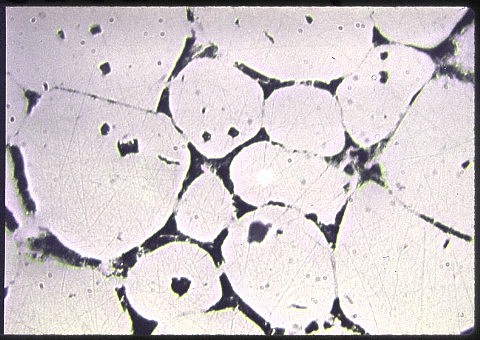Microstructures
by
George
Langford, Sc.D., Massachusetts Institute of Technology, Cambridge, MA,
1966
Copyright©2005 by George Langford
Cast Irons, High Alloy Steels,
and Superalloys - Lesson 2 -
First specimen

|
This is another high speed steel of the 18-4-1 type like the
previous specimen, but it has been oil quenched from 1315C. It
has a hardness of Rockwell C63.
What has happened to it ?
|
Explanation: The specimen
has been burned. It was
hot enough to melt partially, followed by catastrophic oxidation of the
liquid at the austenite grain boundaries. The prior austenite
grains became very coarse, and virtually all the M6C and VC carbides
have been consumed by decarburization, even though sufficient carbon
remained in the austenite to allow martensitic hardening anyway. You
can't see it well in this photomicrograph, but oxide and an iron
carbide eutectic are left in the prior austenite grain boundaries.
|

